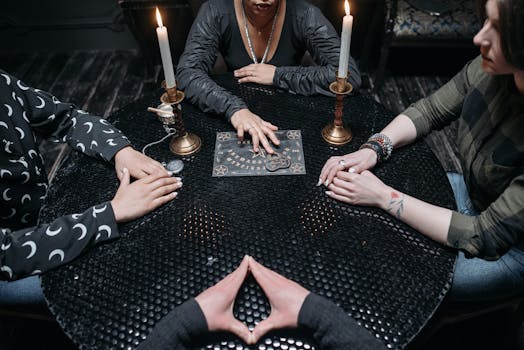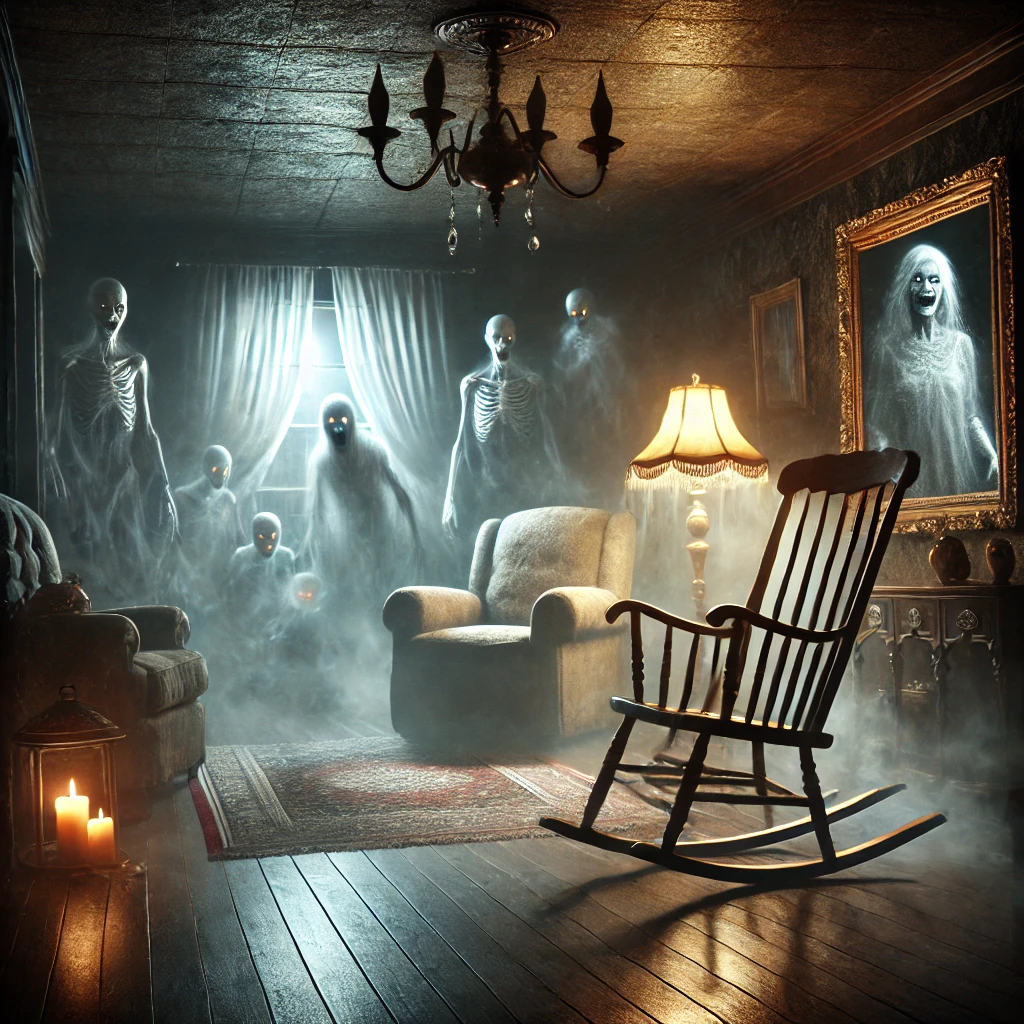Discover the beginners guide to demonology and learn what demons are, where they come from, and how different cultures explain their origins. Explore types of demons, spiritual beliefs, and key concepts behind the study of dark entities.
Demonology has captivated human curiosity for centuries, blending mythology, religion, and folklore into a mysterious and often misunderstood subject.
In this beginner’s guide to demonology, we’ll explore what demons are, where they come from, and how different cultures have interpreted their presence throughout history.
Whether you’re drawn to ancient texts, paranormal encounters, or simply curious about the origins of evil entities, this guide will help you understand the foundations of demonology.
Contents
Introduction: Beginners Guide to Demonology – Understanding Demons and Their Origins
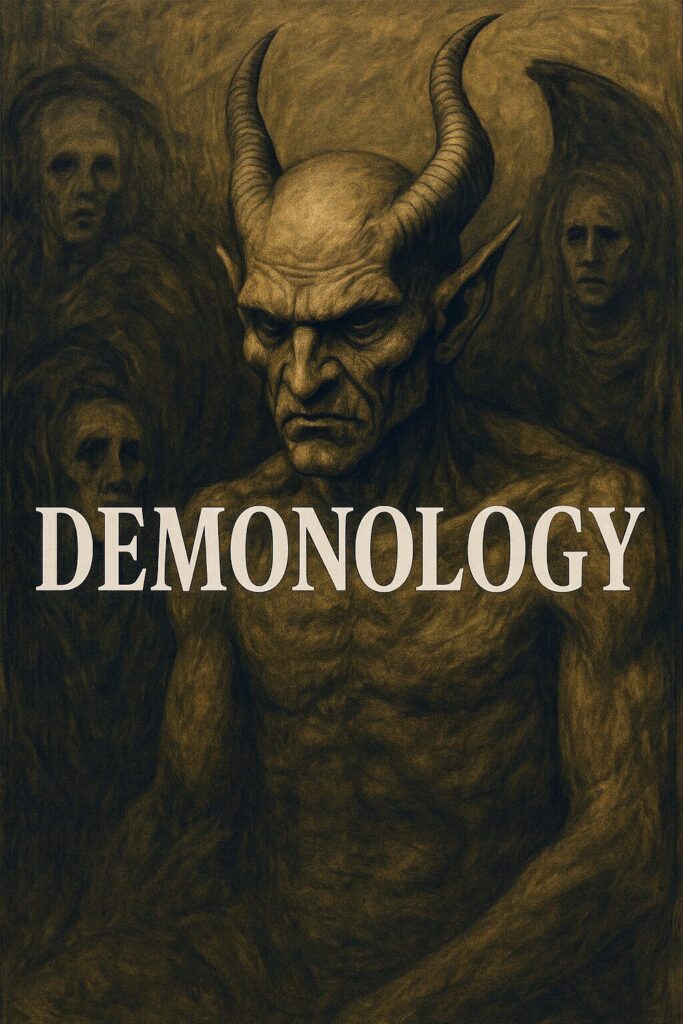
Are you curious about demons and where they come from?
You’re not alone. Demonology has fascinated people for centuries.
It’s a field filled with mystery, dark legends, and powerful stories.
In this beginner’s guide to demonology, we’ll break it all down for you in simple terms.
No complicated words. No confusing ideas. Just clear, honest information.
So, what is demonology?
It’s the study of demons, evil spirits, and their roles in religion, folklore, and paranormal belief.
People from all over the world have different names and ideas for these dark beings.
Some see them as fallen angels. Others think they are ancient spirits or forces of chaos.
No matter the origin, demons have always played a role in how we understand fear, temptation, and the unseen world.
Whether you’re a paranormal fan, a spiritual seeker, or just someone who wants to learn more, you’re in the right place.
We’ll explore what demons are, how they’re described in different cultures, and where these stories come from.
By the end, you’ll have a solid understanding of demonology basics.
You’ll learn about the origins of demons, their types, and the beliefs that surround them.
Let’s get started on your journey into the world of demonology.
Beginners Guide to Demonology: Understanding Demons, Origins, and Types Explained
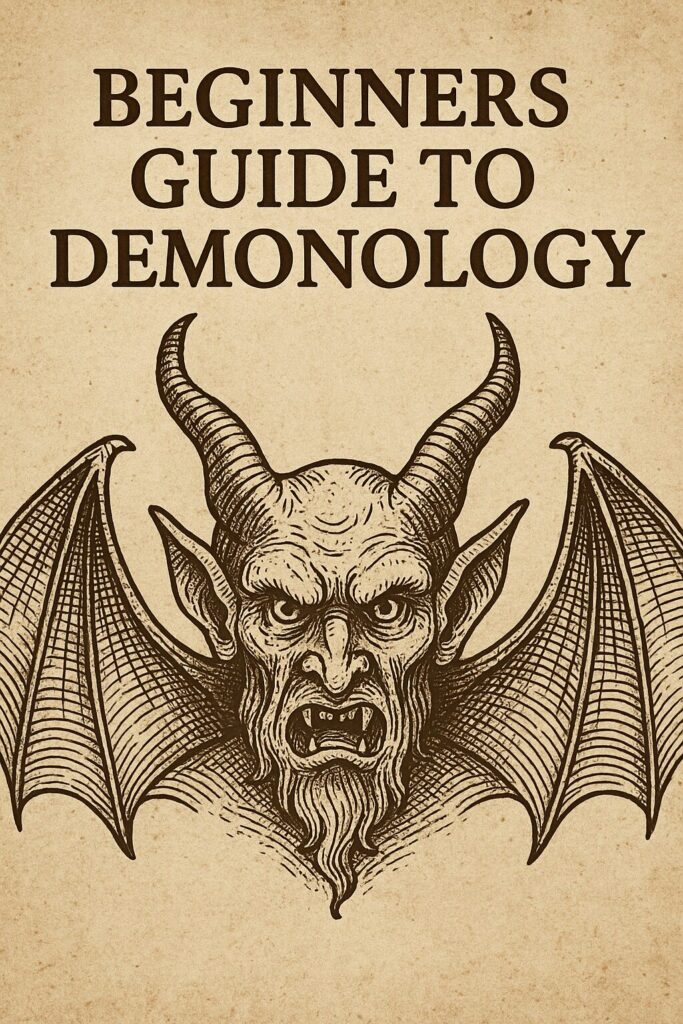
What Is Demonology and Why Does It Matter?
Demonology is the study of demons, evil spirits, and malevolent supernatural beings.
While it may sound like something from horror movies or ancient myth, this field has been taken seriously by theologians, scholars, and paranormal researchers for centuries.
At its core, demonology seeks to explain the presence of evil in the world.
It offers insights into how different cultures, religions, and belief systems have tried to understand, classify, and protect against these unseen forces.
Whether you’re a paranormal enthusiast, a curious spiritual seeker, or just looking to understand the darker side of folklore and theology, demonology can offer a powerful lens into the shadowy corners of the human experience.
In this beginner’s guide, we’ll dive deep into the origins of demons, their roles in religious and cultural systems, and what demonologists look for in their studies.
What Are Demons? A Look at Their Nature and Role
Demons are typically described as malevolent supernatural beings that operate outside the natural and divine order.
They are often believed to bring harm, manipulate emotions, cause illness, tempt people toward sin, or infest physical spaces.
Unlike ghosts or spirits, which may be remnants of human souls, demons are considered non-human entities that exist to spread chaos and destruction.
These entities are usually intelligent, cunning, and spiritually dangerous.
Some are known to deceive their victims by appearing as innocent or helpful beings. Others thrive on fear and destruction.
Many religious texts and folkloric traditions suggest that demons have a structured hierarchy, with powerful rulers and legions of lesser spirits under their control.
Common Traits Associated With Demons:
- They Feed on Emotional or Spiritual Weakness:
Many traditions describe demons as being attracted to human vulnerability. They may draw energy from fear, anger, guilt, or sorrow. When a person is mentally or spiritually weak, they are said to become more susceptible to demonic influence or possession. - They Can Possess or Influence Living Beings:
One of the most disturbing aspects of demonology is the belief that demons can enter and control a person’s body or mind. This form of possession can lead to dramatic changes in behavior, voice, physical strength, and even memory. - They Oppose Divine or Sacred Forces:
In nearly all spiritual systems, demons exist as adversaries to divine forces. They are considered the enemies of light, purity, and truth. This constant opposition to goodness is a core trait that separates demons from other spirits or entities. - They Manipulate and Deceive:
Demons are known to lie, twist the truth, and create illusions. Their tactics may involve slowly luring a person into temptation, isolating them from others, or convincing them to act out harmful behaviors.
Origins of Demons: Where Do These Entities Come From?
The origin of demons is one of the most debated topics in theology and folklore.
Some traditions claim that demons were once divine beings who rebelled against the order of heaven.
Others suggest that they are ancient forces of chaos or the spirits of the damned.
Still others believe they are the personification of our darkest fears and inner demons.
Theories of Demon Origins:
- Fallen Angels from Heaven:
Perhaps the most widely accepted theory in Abrahamic religions is that demons are fallen angels. According to this belief, certain angels defied God’s authority and were cast out of heaven. Led by Lucifer, these rebellious beings fell from grace and became twisted by pride and hatred. Their punishment was eternal exile, and their mission became to corrupt humanity and oppose the divine. - Primordial Spirits of Chaos:
Some ancient mythologies describe demons as primal entities born from the void or chaos that existed before the universe was formed. In this view, demons were never good to begin with. They were created as destructive forces to balance out creation and order, embodying rage, greed, lust, and decay. - Cursed Human Souls:
In certain folklore traditions, demons are thought to be the spirits of extremely evil people. These individuals, after death, were denied peace and were cursed to roam as dark entities. Their malevolence in life carried over into the afterlife, and over time, their spirits transformed into fully demonic beings. - Spiritual Parasites or Energy Beings:
Some modern paranormal investigators and occultists view demons not as ancient mythological beings, but as energetic parasites. These beings feed on negative energy, lingering in spaces with trauma, fear, or violence. In this theory, they may not come from a specific dimension or origin but exist wherever suffering is present.
Demonology in Religion: How Faith Traditions View Demons
Nearly every major religion has some concept of demonic beings.
While the names, roles, and interpretations vary, the common thread is clear: demons are harmful, deceptive, and powerful.
Studying how various belief systems treat demons helps give a broader understanding of demonology.
Christian Views on Demons:
Christianity views demons as fallen angels under the command of Satan. They seek to tempt humans, destroy faith, and spread evil in the world. The New Testament contains many references to demonic possession, with Jesus himself casting out demons. Priests may conduct exorcisms to drive out these spirits, using prayer, holy water, and sacred symbols.
Islamic Demonology (The Jinn):
In Islam, demons are often referred to as jinn. These beings were created from smokeless fire, and unlike angels, they have free will. Some jinn are good, but others disobey God and seek to harm humans. The Qur’an mentions jinn often, and many believe they can possess people, whisper evil thoughts, and cause misfortune. Protection prayers and rituals are commonly used to guard against them.
Jewish Beliefs on Demons:
Jewish demonology includes beings like shedim and lilin. These creatures are mentioned in the Talmud and other writings. They often dwell in desolate places, attack the vulnerable, or tempt people into sin. Lilith, one of the most well-known figures in Jewish folklore, is sometimes described as a demon who preys on children and men in their sleep.
Eastern Religions and Demonic Spirits:
In Hinduism and Buddhism, there are beings similar to demons, such as asuras and rakshasas. Asuras are powerful but prideful beings who often wage war against the gods. Rakshasas are flesh-eating spirits that spread fear and chaos. These beings are usually portrayed as spiritual obstacles, testing the faith and resolve of humans.
Types of Demons and Their Characteristics
Demonologists often classify demons by their nature, rank, or the effects they have on the physical and spiritual world. The following are some of the most common types reported across cultures.
Incubi and Succubi:
These demons are said to seduce humans in their sleep. An incubus is male, while a succubus is female. These spirits feed on sexual energy and often appear in dreams. Victims may experience exhaustion, sleep paralysis, or feelings of being watched.
Poltergeists (Noisy Spirits):
Poltergeists are known for causing physical disturbances. They move objects, knock on walls, and create chaos in homes. Unlike typical ghosts, poltergeists are believed to be more aggressive and sometimes demonic in nature.
Possessing Spirits:
These demons enter and control a human body. Possession may begin with whispers, strange dreams, or unexplained illnesses. Over time, the victim may lose control of their actions, speech, and thoughts. Exorcisms are the main form of removal in religious traditions.
Elemental Demons:
Linked to earth, fire, water, or air, these demons manipulate nature. Fire demons might cause unexplained burns or heat. Water demons may lure people to drown. These entities are often tied to specific locations and natural disasters.
Familiar Spirits:
These demons act as helpers to witches or occult practitioners. They may take the form of animals, shadows, or whispers. In exchange for loyalty, the familiar offers knowledge, power, or protection.
How Demonologists Study and Understand Demons
Demonology is not just about reading old books. It’s also about spiritual awareness, critical thinking, and real-world experience.
Demonologists often come from religious backgrounds, paranormal investigation teams, or academic theology departments.
Ways Demonologists Study Demons:
- Reading Religious and Occult Texts:
Ancient scriptures like the Bible, Qur’an, and Talmud are central to understanding the spiritual roots of demons. Occult grimoires such as the Lesser Key of Solomon or The Book of Abramelin also provide insight into demonic hierarchies and names. - Investigating Paranormal Activity:
Many demonologists conduct field research. This includes visiting haunted sites, interviewing victims of possession, and documenting unusual phenomena. They often work alongside psychics, priests, or paranormal teams. - Spiritual Training and Protection:
Because of the risks involved, demonologists often undergo spiritual training. This includes learning protection prayers, understanding how to ward off evil, and maintaining strong mental and emotional discipline.
Conclusion: Understanding Demonology as a Path to Awareness
Demonology is not for the faint of heart. It deals with dark forces, psychological trauma, and deep spiritual truths.
But it can also be a powerful path to self-awareness, strength, and faith.
By studying the origins, traits, and dangers of demons, we can better protect ourselves from harm and understand the nature of spiritual warfare.
If you’re just getting started, take it slow. Study from trusted sources.
Ask questions. Protect your spirit.
Whether you believe demons are real or symbolic, their presence in human culture tells us something powerful about fear, faith, and the struggle between light and darkness.
Final Thoughts: Exploring Demonology with Caution and Curiosity
Demonology is a topic that walks the line between ancient tradition and modern fascination.
It’s a subject that challenges our beliefs, stretches our imagination, and often confronts our fears.
Whether you believe demons are real entities or powerful symbols of human struggle, the study of demonology opens the door to a deeper understanding of good, evil, and everything in between.
Some demons are fallen angels, others are ancient spirits, and some are the shadows of human emotions and actions.
Their stories have shaped religions, inspired myths, and even sparked real-world experiences of fear, possession, and spiritual warfare.
But remember, demonology is not just about reading scary stories.
It’s about learning with purpose. It’s about understanding the forces that people believe influence the world around them.
If you’re thinking about diving deeper into demonology, make sure you use trusted sources.
Avoid sensationalism and stick to research rooted in theology, folklore, or verified paranormal investigation.
Demonology may not give you all the answers, but it offers a powerful way to ask the right questions.
Why do we fear the dark? What makes a spirit evil? How do belief systems shape our view of right and wrong?
These are the deeper questions that come with studying demons and their origins.
Whether this is your first step or one of many, always approach this subject with curiosity, care, and a clear mind.
There’s much more to learn, and the more you know, the more prepared you are for the unknown.
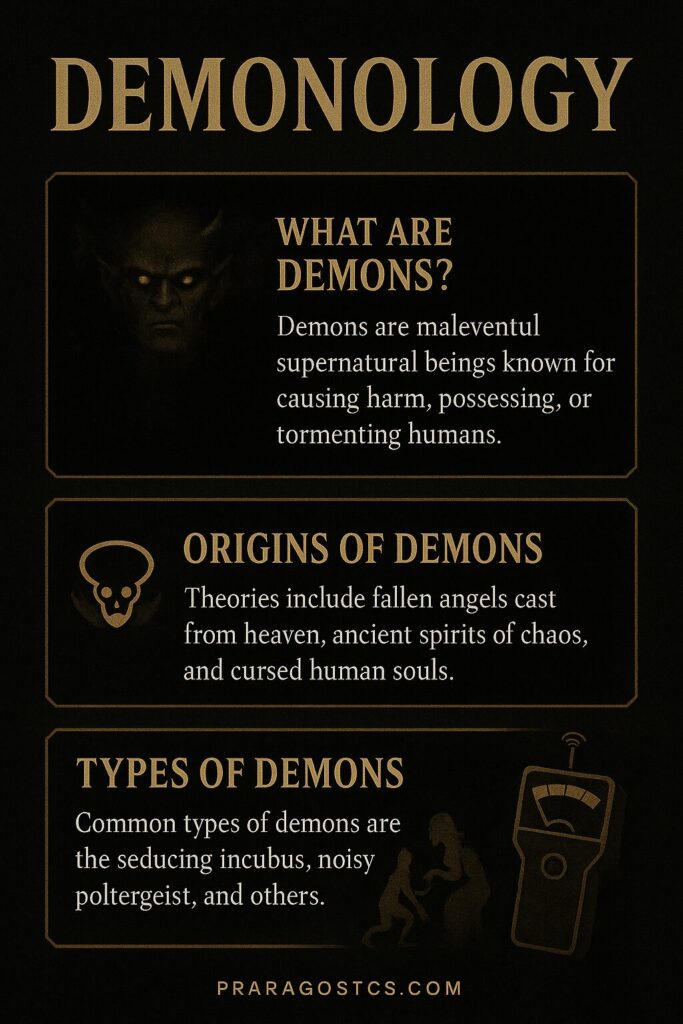
Frequently Asked Questions (FAQ): Beginners Guide to Demonology
Q1: What is demonology?
A: Demonology is the study of demons, dark spirits, and evil supernatural beings. It explores their origins, behavior, roles in different religions and cultures, and how they interact with the physical world. Demonology is often studied through religious texts, folklore, and paranormal investigation.
Q2: Are demons real?
A: That depends on your beliefs. Some people see demons as real spiritual entities that can influence or harm humans. Others view them as symbols of fear, temptation, or evil. In religion and folklore, they have been treated as very real for thousands of years.
Q3: Where do demons come from?
A: Different traditions offer different answers. Some say demons are fallen angels cast out of heaven. Others say they are ancient spirits born from chaos or cursed souls of the dead. In some cultures, demons are energy beings that feed on negative emotions.
Q4: How do demons affect people?
A: According to various beliefs, demons can possess people, cause illness, influence thoughts, or create bad luck. Some signs of possible demonic presence include sleep paralysis, sudden mood changes, strange noises, or unexplained fear.
Q5: Can studying demonology be dangerous?
A: Some spiritual traditions warn that studying demons or calling on them can invite trouble. It’s important to approach demonology with caution, respect, and spiritual protection. Avoid attempting summoning or rituals without proper knowledge and safeguards.
Q6: What are some common types of demons?
A:
- Incubus/Succubus: Sexual spirits that drain energy through dreams or contact.
- Poltergeists: Chaotic spirits known for physical disturbances.
- Possessing spirits: Entities that control a person’s body or mind.
- Elemental demons: Spirits tied to fire, water, earth, or air.
- Familiar spirits: Lesser demons that serve as companions to witches or occultists.
Q7: How can I protect myself from demons?
A: Protection depends on your beliefs. Common practices include prayer, carrying spiritual symbols, using blessed objects like holy water or crystals, burning protective herbs like sage, and staying emotionally and spiritually strong.
Q8: Do all religions believe in demons?
A: Most major religions have some concept of evil spirits. Christianity, Islam, Judaism, Hinduism, and Buddhism all contain stories about dark beings. The names, roles, and meanings vary, but the idea of a harmful spiritual force is nearly universal.
Q9: Is demonology the same as the occult?
A: No, but they can overlap. Demonology focuses on the study of demons and evil spirits. The occult covers a wider range of practices including magic, divination, and hidden knowledge. Some occultists include demonology in their studies, but not all do.
Q10: How can I start learning more about demonology?
A: Start by reading trusted religious texts, folklore, and books from respected demonologists. Avoid sensational sources and stick with those that treat the topic seriously. Visit websites like Paraghosts.com to find guides, case studies, and well-researched information.
Website Sources
- The Catholic Encyclopedia – Demonology
This entry provides a historical and theological look at demonology from a Catholic perspective, covering key beliefs about demons and their origins in Christian doctrine. - Britannica – Demon | Mythology and Religion
A well-researched overview of demons across various religions and cultures, offering historical context and explanations for how demons are viewed worldwide. - Islamic Encyclopedia – Jinn in Islam
This article explains the concept of jinn in Islamic theology, a central topic in Islamic demonology. It details their origins, abilities, and roles in belief systems. - Jewish Virtual Library – Demons and Demonology
This source explores Jewish teachings on demons, including references to Lilith and the Shedim, and how these entities fit into Jewish religious thought and folklore. - Learn Religions – What Is Demonology?
A beginner-friendly article that explains what demonology is, how it is studied, and what sources are commonly used by modern demonologists and spiritual researchers. - The Paranormal Guide – A Look at Demon Types
This article dives into different types of demons, how they’re categorized, and what signs might indicate demonic activity, offering insight for paranormal enthusiasts. - Ancient Origins – Demons in Ancient Mythology
A deep dive into how demons were described in ancient mythologies, including Mesopotamian, Greek, and other early civilizations that shaped today’s beliefs.
For an insightful introduction to demonology, consider watching the following YouTube video:
Explore More at Paraghosts.com
Thanks for reading! If you enjoyed this beginner’s guide to demonology and want to dive deeper into the world of the paranormal, there’s so much more waiting for you at Paraghosts.com. From haunted locations and ghost encounters to spirit communication, demon lore, and real investigative tools, we cover everything that lives beyond the veil.
We update regularly with new blog posts, real stories, expert guides, and eerie discoveries. So whether you’re a curious explorer or a seasoned investigator, Paraghosts is your trusted source for all things supernatural.
Visit Paraghosts.com now and uncover what’s really lurking in the shadows.
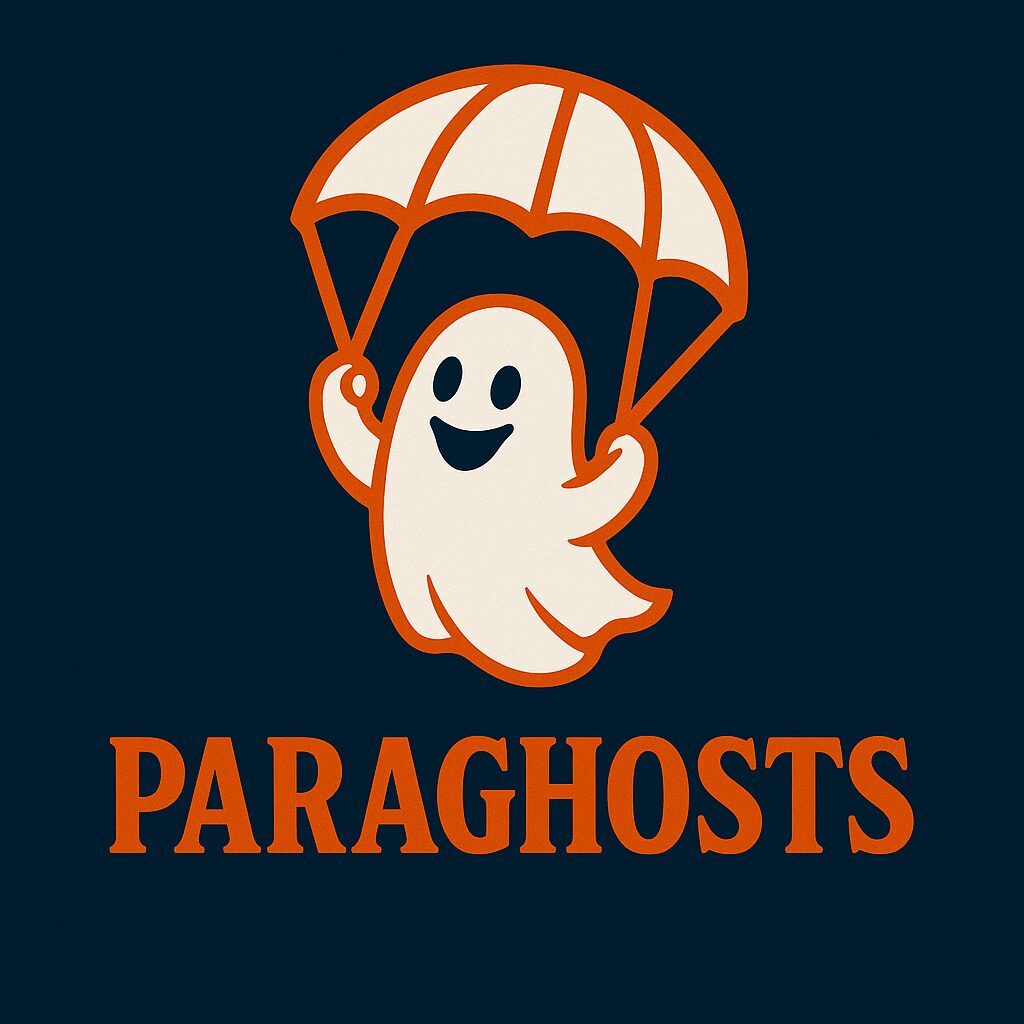
- Top 10 Most Haunted Hotels in America You Can Stay At - September 22, 2025
- What Is a Yeti? Unraveling the Himalayan Legend - September 20, 2025
- UAP vs UFO: Explaining the Key Differences and Why It Matters Today - September 19, 2025
